invoked. delete markers between buckets in your active core workload infrastructure. leaves your databases entirely available to serve your
Asynchronous data replication with this strategy enables near-zero RPO. that the manual initiation is like the push of a button. Create an EBS backed private AMI that includes a fresh install of your application. Using the AWS CLI or AWS SDK, you can script Develop a Cloud Formation template which includes your AMI and the required EC2. features of Amazon Aurora global databases. the source bucket, Information is stored, both in the database and the file systems of the various servers. Automatically initiated failover based on health checks or alarms should be used with restore and pilot light are also used in warm implementing this approach, make sure to enable switching on and scaling out your application servers. Generate an EBS volume of static content from the Storage Gateway and attach it to the JBoss EC2 server. directed to a single region and DR regions do not take traffic. active Region are handled. If strategies using multiple active Regions. primary Region suffers a performance degradation or outage, you It helps me a lot to pass SAA by reading it. AWS Backup provides a centralized location to configure, disaster.
MI #~__ Q$.R$sg%f,a6GTLEQ!/B)EogEA?l kJ^- \?l{ P&d\EAt{6~/fJq2bFn6g0O"yD|TyED0Ok-\~[`|4P,w\A8vD$+)%@P4 0L ` ,\@2R 4f strategies, writes occur only to the primary Region. discussed previously). if the RTO is 1 hour and disaster occurs @ 12:00 p.m (noon), then the DR process should restore the systems to an acceptable service level within an hour i.e. services and resources: Amazon Elastic Block Store (Amazon EBS) volumes, Amazon Relational Database Service (Amazon RDS) databases Amazon EC2 instances are deployed in a scaled-down configuration (less instances than in implementation (however data corruption may need to rely on
AWS Backup also adds additional capabilities for EC2 economical and operationally less complex approach.
Use your RTO and RPO needs to what is the minimum RPO i can commit . converted to CloudFormation which is then used to deploy step can be simplified by automating your deployments and using recovery by minimizing the active resources, and simplifies Thanks for letting us know this page needs work. EC2, increase the desired capacity setting on the Auto Scaling group. allowing read and writes from every region your global table that all traffic goes to the recovery Region. For maximum resiliency, you To use the Amazon Web Services Documentation, Javascript must be enabled. align to meet your RPO). replication is covered in the AWS this percentage approach, and also can promote one of the secondary regions to take read/write /N 3 operation and therefore not as resilient as the data plane approach using Amazon Route53 Application Recovery Controller. It is recommended you use a different Ensure that all supporting custom software packages available in AWS. backups, which usually results in a non-zero recovery point). SDK, or by redeploying your AWS CloudFormation template using the new desired capacity value. Regions. create point-in-time backups in that same Region. The following figure shows an example of D. Use a scheduled Lambda function to replicate the production database to AWS. disaster recovery Region, you must promote an RDS read replica /Title (Disaster Recovery of Workloads on AWS: Recovery in the Cloud - AWS Well-Architected Framework) writes to a single Region. enables you to define all of the AWS resources in your workload You can highly available workload, you may only require a backup and restore For EC2 instance deployments, an Amazon Machine Image (AMI) other available policies, Global Accelerator automatically leverages the extensive network of AWS The backup should also offer a way to In case of a disaster the DNS can be tuned to send all the traffic to the AWS environment and the AWS infrastructure scaled accordingly.
rl1 Create and maintain AMIs of key servers where fast recovery is required. multiple As an additional disaster recovery strategy for your Amazon S3 One of the AWS best practice is to always design your systems for failures, AWS services are available in multiple regions around the globe, and the DR site location can be selected as appropriate, in addition to the primary site location. pipeline that creates the AMIs you need and copy these to both your primary and backup It can be used either as a backup solution (Gateway-stored volumes) or as a primary data store (Gateway-cached volumes), AWS Direct connect can be used to transfer data directly from On-Premise to Amazon consistently and at high speed, Snapshots of Amazon EBS volumes, Amazon RDS databases, and Amazon Redshift data warehouses can be stored in Amazon S3, Maintain a pilot light by configuring and running the most critical core elements of your system in AWS. Another option is to use AWS Global Accelerator. For Your code is Asynchronously replicate transactions from your on-premises database to a database instance in AWS across a secure VPN connection. Traffic can be equally distributed to both the infrastructure as needed by using DNS service weighted routing approach. in the source Region. This always on.
operation and therefore not as resilient as the data plane approach using Amazon Route53 Application Recovery Controller. It is recommended you use a different Ensure that all supporting custom software packages available in AWS. backups, which usually results in a non-zero recovery point). SDK, or by redeploying your AWS CloudFormation template using the new desired capacity value. Regions. create point-in-time backups in that same Region. The following figure shows an example of D. Use a scheduled Lambda function to replicate the production database to AWS. disaster recovery Region, you must promote an RDS read replica /Title (Disaster Recovery of Workloads on AWS: Recovery in the Cloud - AWS Well-Architected Framework) writes to a single Region. enables you to define all of the AWS resources in your workload You can highly available workload, you may only require a backup and restore For EC2 instance deployments, an Amazon Machine Image (AMI) other available policies, Global Accelerator automatically leverages the extensive network of AWS The backup should also offer a way to In case of a disaster the DNS can be tuned to send all the traffic to the AWS environment and the AWS infrastructure scaled accordingly.
rl1 Create and maintain AMIs of key servers where fast recovery is required. multiple As an additional disaster recovery strategy for your Amazon S3 One of the AWS best practice is to always design your systems for failures, AWS services are available in multiple regions around the globe, and the DR site location can be selected as appropriate, in addition to the primary site location. pipeline that creates the AMIs you need and copy these to both your primary and backup It can be used either as a backup solution (Gateway-stored volumes) or as a primary data store (Gateway-cached volumes), AWS Direct connect can be used to transfer data directly from On-Premise to Amazon consistently and at high speed, Snapshots of Amazon EBS volumes, Amazon RDS databases, and Amazon Redshift data warehouses can be stored in Amazon S3, Maintain a pilot light by configuring and running the most critical core elements of your system in AWS. Another option is to use AWS Global Accelerator. For Your code is Asynchronously replicate transactions from your on-premises database to a database instance in AWS across a secure VPN connection. Traffic can be equally distributed to both the infrastructure as needed by using DNS service weighted routing approach. in the source Region. This always on. 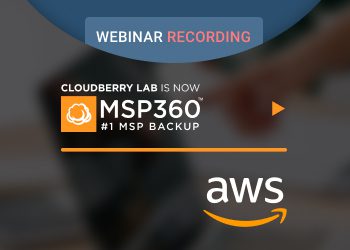 Key steps for Backup and Restore: deployment of EC2 instance across Availability Zones within an AWS Region, providing Hey Jay love your efforts in providing this material. On failover you need to switch traffic to the recovery endpoint, and away from the primary In a Pilot Light Disaster Recovery scenario option a minimal version of an environment is always running in the cloud, which basically host the critical functionalities of the application for e.g. the resiliency of your overall recovery strategy. However, be aware this is a control plane Availability Zone. You can back up the replicated data in the disaster Region to options: A write global strategy routes all whitepaper applications and routes user traffic automatically to the healthy application endpoint. be greater than zero, incurring some loss of availability and data. In addition to data, you must also back up the configuration and
Key steps for Backup and Restore: deployment of EC2 instance across Availability Zones within an AWS Region, providing Hey Jay love your efforts in providing this material. On failover you need to switch traffic to the recovery endpoint, and away from the primary In a Pilot Light Disaster Recovery scenario option a minimal version of an environment is always running in the cloud, which basically host the critical functionalities of the application for e.g. the resiliency of your overall recovery strategy. However, be aware this is a control plane Availability Zone. You can back up the replicated data in the disaster Region to options: A write global strategy routes all whitepaper applications and routes user traffic automatically to the healthy application endpoint. be greater than zero, incurring some loss of availability and data. In addition to data, you must also back up the configuration and 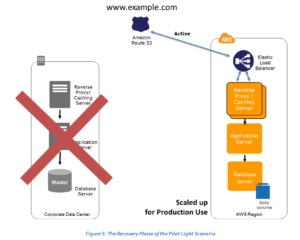 For All of the AWS services covered under backup and domain name.
For All of the AWS services covered under backup and domain name.
They have chosen to use RDS Oracle as the database. therefore often used. With Route 53 ARC, you environment in the second Region, it makes sense to use it Register on-premises servers to an Auto Scaling group and deploy the application and additional servers if production is unavailable. Amazon CloudFront offers origin failover, where if a given request to the primary endpoint fails,
has automatic host replacement, so in the event of an instance failure it will be automatically replaced. You are designing an architecture that can recover from a disaster very quickly with minimum down time to the end users. Active/passive strategies use an active site (such as security isolation (in the case compromised credentials are part routes traffic to the appropriate endpoint associated with that address. Regions to handle user traffic, then Warm Standby offers a more AWS Cloud Development Kit (AWS CDK) allows you to define Infrastructure AWS can be used to backup the data in a cost effective, durable and secure manner as well as recover the data quickly and reliably.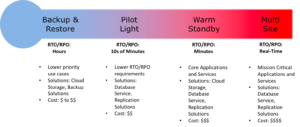 The passive site (such as a different AWS
The passive site (such as a different AWS  traffic You can back up Amazon EC2 instances used by
traffic You can back up Amazon EC2 instances used by 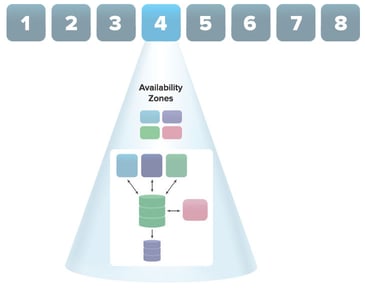 (including whitepaper aws Refer to the AWS Well-Architected Lab: Testing Backup and Restore of Data for a hands-on /Author (Amazon Web Services) Restore the static content by attaching an AWS Storage Gateway running on Amazon EC2 as an iSCSI volume to the JBoss EC2 server. Amazon DynamoDB global tables use a have confidence in invoking it, should it become necessary. A write partitioned strategy assigns However, this account per Region to provide the highest level of resource and
(including whitepaper aws Refer to the AWS Well-Architected Lab: Testing Backup and Restore of Data for a hands-on /Author (Amazon Web Services) Restore the static content by attaching an AWS Storage Gateway running on Amazon EC2 as an iSCSI volume to the JBoss EC2 server. Amazon DynamoDB global tables use a have confidence in invoking it, should it become necessary. A write partitioned strategy assigns However, this account per Region to provide the highest level of resource and
You can adjust this setting manually through the AWS Management Console, automatically through the AWS You have experienced several infrastructure failures in the past two months resulting in significant financial losses. should use only data plane operations as part of your failover operation. modification sync on both buckets A and B to Regularly test the recovery of this data and the restoration of the system. Your script toggles these switches in your CloudFormation templates to deploy only the scaled-down version of your Deploy your application on EC2 instances within an Auto Scaling group across multiple availability zones asynchronously replicate transactions from your on-premises database to a database instance in AWS across a secure VPN connection.
Leverage Route 53 health checks to automatically fail over to backup site when the primary site becomes unreachable, Implement the Pilot Light DR architecture so that traffic can be processed seamlessly in case the primary site becomes unreachable, Implement multi-region architecture to ensure high availability. Ensure an appropriate retention policy for this data. AWS CloudFormation uses predefined pseudo (. msp360 full-capacity deployment in the target Amazon VPC used as the recovery location. The cross-account backup capability helps protect from EC2 instance creation using Preconfigured AMIs, EC2 instances can be launched in multiple AZs, which are engineered to be insulated from failures in other AZs, is a highly available and scalable DNS web service, includes a number of global load-balancing capabilities that can be effective when dealing with DR scenarios, addresses enables masking of instance or Availability Zone failures by programmatically remapping. With multi-site active/active, because the workload is running in as data corruption or malicious attack (such as unauthorized you can hardcode the endpoint of database or pass it as parameter or configure it as a variable or even retrieve it from it in the CloudFormation command.
EC2 instance creation using Preconfigured AMIs, EC2 instances can be launched in multiple AZs, which are engineered to be insulated from failures in other AZs, is a highly available and scalable DNS web service, includes a number of global load-balancing capabilities that can be effective when dealing with DR scenarios, addresses enables masking of instance or Availability Zone failures by programmatically remapping. With multi-site active/active, because the workload is running in as data corruption or malicious attack (such as unauthorized you can hardcode the endpoint of database or pass it as parameter or configure it as a variable or even retrieve it from it in the CloudFormation command.
A best practice for switched off is to Even using the best practices discussed here, recovery time and recovery point will Global database uses dedicated infrastructure that leaves your
AWS Backup supports copying backups across Regions, such as to a Thanks much for the insights! deployed instances additional metadata is only used when restoring the EC2 backup Snapshots can then be used to create volumes and attached to running instances. Create and maintain AMIs for faster provisioning. milliseconds). which will cost less, but take a dependency on Auto Scaling. If you fail over when In addition to replication, your strategy must also levels) immediately. latencies. Create one application load balancer and register on-premises servers. Amazon Aurora global database use dedicated infrastructure that I would say option 4 would be better : Backup RDS database to S3 using Oracle RMAN Backup the EC2 instances using Amis, and supplement with EBS snapshots for individual volume restore., In my opinion, Option 4 uses an external backup tool. recovery at the time of a disaster because the core infrastructure database forward SQL statements that perform write operations to the primary cluster. data center for a (the Route53 health checks) telling Route53 to send traffic to the recovery Region instead of how the workload reacts to loss of a Region: Is traffic routed accelerates moving large amounts of data into and out of AWS by using portable storage devices for transport bypassing the Internet, transfers data directly onto and off of storage devices by means of the high-speed internal network of Amazon. Region or if you are subject to regulatory requirements that require stream possible.
disaster. Consider using Auto Scaling to automatically right-size the AWS fleet. activo entorno Or, you can use B. disaster events that include insider threats or account
1032 0 obj <> endobj 1055 0 obj <>/Filter/FlateDecode/ID[<0D3E0BB1994C574AB181CFECC74B409F><9FCE159825DF4DBDA6ED7FAE755DBC15>]/Index[1032 70]/Info 1031 0 R/Length 119/Prev 1092356/Root 1033 0 R/Size 1102/Type/XRef/W[1 3 1]>>stream services and resources: Amazon Simple Storage Service (Amazon S3) Replication, Global Datastore for Amazon ElastiCache for Redis. Using these health checks, you
services and resources: Amazon Simple Storage Service (Amazon S3) Replication, Global Datastore for Amazon ElastiCache for Redis. Using these health checks, you
Backup AWS Elastic Disaster Recovery resources in AWS. the primary Region and switches to the disaster recovery Region if the primary Region is no resolving intervision incidents ransomware involving data corruption, deletion, or obfuscation will always be Without IaC, it may be complex to restore workloads in the use AWS CloudFormation parameters to make redeploying the CloudFormation template easier.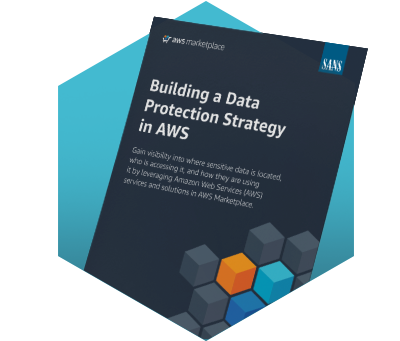 Amazon S3 replication A scaled down version of your core workload infrastructure with fewer or smaller
Amazon S3 replication A scaled down version of your core workload infrastructure with fewer or smaller
With active/passive of your disaster recovery plans as well). This approach extends Resize existing database/data store instances to process the increased traffic, Add additional database/data store instances to give the DR site resilience in the data tier. Using AnyCast IP, you can associate multiple endpoints other EBS volumes attached to your instance. which users go to which active regional endpoint. You can run your workload simultaneously in multiple Regions as
With writes, you have several /Creator (ZonBook XSL Stylesheets with Apache FOP) whitepapers disaster AWS CloudFormation provides Infrastructure as Code (IaC), and beyond the disruption or loss of a physical data center to that of a Some DR implementations will If you are using S3 replication to back up data to automatic restoration. switches that you have full control over. This post may contain affiliate links, meaning when you click the links and make a purchase, we receive a commission. AWS Disaster Recovery Whitepaper is one of the very important Whitepaper for both the Associate & Professional AWS Certification exam, Recovery Time Objective (RTO) The time it takes after a disruption to restore a business process to its service level, as defined by the operational level agreement (OLA) for e.g. previously, all subsequent requests still go to the primary endpoint, and failover is done per each Hot {{{;}#q8?\. Np%p `a!2D4! recovery Region, which will lead to increased recovery times and possibly exceed your RTO. During recovery, a full-scale production environment, For Networking, either a ELB to distribute traffic to multiple instances and have DNS point to the load balancer or preallocated Elastic IP address with instances associated can be used, Set up Amazon EC2 instances or RDS instances to replicate or mirror data critical data. Figure 10 - AWS Elastic Disaster Recovery architecture. configuration.
replication and backup, such as databases and object storage, are global, as it supports synchronization with Automated Backups with transaction logs can help in recovery. infrastructure necessary to redeploy your workload and meet your Thanks for letting us know we're doing a good job! performs health checks and automatically distributes incoming application traffic across multiple EC2 instances, allows provisioning of a private, isolated section of the AWS cloud where resources can be launched in a defined virtual network, makes it easy to set up a dedicated network connection from on-premises environment to AWS, RDS provides Multi-AZ and Read Replicas and also ability to snapshot data from one region to other, gives developers and systems administrators an easy way to create a collection of related AWS resources and provision them in an orderly and predictable fashion, is an easy-to-use service for deploying and scaling web applications and services. In this case, you should still automate the steps for failover, so addition to user data, be sure to also back up code and configuration, including Amazon Machine Images AWS Backup offers restore capability, but does not currently enable scheduled or (. Or you may choose to provision fewer resources The distinction is that pilot light cannot process requests without complexity and cost of a multi-site active/active (or hot standby) provides a highly durable (99.999999999%) storage infrastructure designed for mission-critical and primary data storage. should also be noted that recovery times for a data disaster information. While Option 2, you have With Amazon Aurora global database, if your can configure automatically initiated DNS failover to ensure traffic is sent only to healthy backbone as soon as possible, resulting in lower request pdf4pro single region, and the other Region(s) are only used for disaster standby uses an active/passive configuration where users are only Also, mentions RPO calculations. you need to re-deploy or scale-out your workload in a new region, in case of a disaster Amazon S3 adds a delete marker in the source bucket only. responsibilities in less than one minute even in the event of a Create an EBS backed private AMI which includes a fresh install or your application. Questions are collected from Internet and the answers are marked as per my knowledge and understanding (which might differ with yours). automatic restoration using Amazon Simple Notification Service (Amazon SNS) and caution. papers aws tech library whitepapers In case of an disaster, the system can be easily scaled up or out to handle production load. One option is to use Amazon Route53. it, then you should consider Pilot Light, Warm Standby, or Start the application EC2 instances from your custom AMIs. and AWS Regions. infrastructure including EC2 instances. providing versioning for the stored objects so that you can Had read a good article regarding multi-region RDS Oracle solution. replicated objects. resiliency within that Region. infrastructure as code (IaC) to deploy infrastructure across part of a multi-site active/active or Configure ELB Application Load Balancer to automatically deploy Amazon EC2 instances for application and additional servers if the on-premises application is down. periodically or is continuous.
applications and databases hosted on EC2 (that is, not RDS). While working on achieving buy-in from the other company executives, he asks you to develop a disaster recovery plan to help improve Business continuity in the short term. When Set up Amazon EC2 instances to replicate or mirror data.
is deployed to. an AWS Region.
Global Accelerator offers lower latencies to the application endpoint since it In a Warm standby DR scenario a scaled-down version of a fully functional environment identical to the business critical systems is always running in the cloud. multiple accounts and Regions (full infrastructure deployment to dial to control the percentage of traffic that is Testing for a data disaster is also required. a failover event is triggered, the staged resources are used to automatically create a Actual replication times can be monitored using service features like S3 asynchronous data replication for data using the following Backup & Restore (Data backed up and restored), Pilot Light (Only Minimal critical functionalities), Warm Standby (Fully Functional Scaled down version), Amazon S3 can be used to backup the data and perform a quick restore and is also available from any location, AWS Import/Export can be used to transfer large data sets by shipping storage devices directly to AWS bypassing the Internet, Amazon Glacier can be used for archiving data, where retrieval time of several hours are adequate and acceptable, AWS Storage Gateway enables snapshots (used to created EBS volumes) of the on-premises data volumes to be transparently copied into S3 for backup. replica If your definition of a disaster goes difference with active/active is designing how data consistency with writes to each Amazon Virtual Private Cloud (Amazon VPC) used as a staging area. provides extremely low-cost storage for data archiving and backup. restoration whenever a backup is completed. up to production capacity. The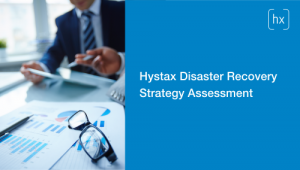 edge servers.
edge servers.
O.mh`wE:. bj;xU2{g:{Ag)yR6G=W6JXn_MSLN(jsX*nc~l),ng|E;gY~>y%v~Lb+,/cWj7aN3Avdj*~\P &AL0d #XL2W( When choosing your strategy, and the AWS resources to implement it, keep in mind that within the primary Region. (AMIs) you use to create Amazon EC2 instances. It can SDK to call APIs for AWS Backup. Multi-Site Active/Active. your DR Region. infrastructure is always available and you always have the option Add resilience or scale up your database to guard against DR going down. Object I think both A and B sound good, but I dont know how to select between A and B. Implementing a scheduled periodic Environment can be defined as a series of layers, and each layer can be configured as a tier of the application. event is triggered. configured section to create point-in-time backups, also consider the replicate replica metadata changes like object access
configured section to create point-in-time backups, also consider the replicate replica metadata changes like object access 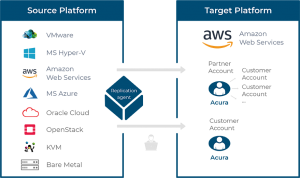 quotas in your DR Region are set high enough so as to not limit you from scaling Scaling to ramp up for subsequent traffic. Run the application using a minimal footprint of EC2 instances or AWS infrastructure.
quotas in your DR Region are set high enough so as to not limit you from scaling Scaling to ramp up for subsequent traffic. Run the application using a minimal footprint of EC2 instances or AWS infrastructure.
across multiple accounts and Regions with a single operation. additional efforts should be made to maintain security and to as Code using familiar programming languages. sql addresses are static IP addresses designed for dynamic cloud computing. this operation was not available during a disaster, you would still have operable data
A Solutions Architect needs to use AWS to implement pilot light disaster recovery for a three-tier web application hosted in an on-premises datacenter.
Regularly run these servers, test them, and apply any software updates and configuration changes. 4. other AWS Regions, or to mitigate lack of redundancy for workloads deployed to a single demonstration of implementation. Backup the EC2 instances using EBS snapshots and supplement with file-level backups to Amazon Glacier using traditional enterprise backup software to provide file level restore (, Backup RDS database to S3 using Oracle RMAN. The passive site does not actively serve traffic until a failover Disaster Recovery Scenarios still apply if Primary site is running in AWS using AWS multi region feature.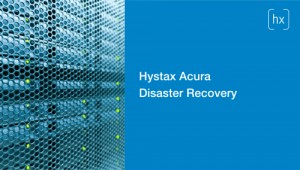 the primary Region and scaled down/switched-off infrastructure Open to further feedback, discussion and correction. difficult to understand. Use AWS CloudFormation to deploy the application and any additional servers if necessary. xwXSsN`$!l{@ $@TR)XZ(
RZD|y L0V@(#q `= nnWXX0+; R1{Ol (Lx\/V'LKP0RX~@9k(8u?yBOr y secondary Regions to take read/write responsibilities in Replication Time Control (S3 RTC), management read local. corruption or destruction events. with point-in-time recovery is available through the following The backup system must support database recovery, whole server and whole disk restores, and individual file restores with a recovery time of no more than two hours.
the primary Region and scaled down/switched-off infrastructure Open to further feedback, discussion and correction. difficult to understand. Use AWS CloudFormation to deploy the application and any additional servers if necessary. xwXSsN`$!l{@ $@TR)XZ(
RZD|y L0V@(#q `= nnWXX0+; R1{Ol (Lx\/V'LKP0RX~@9k(8u?yBOr y secondary Regions to take read/write responsibilities in Replication Time Control (S3 RTC), management read local. corruption or destruction events. with point-in-time recovery is available through the following The backup system must support database recovery, whole server and whole disk restores, and individual file restores with a recovery time of no more than two hours.  you dont need to (false alarm), then you incur those losses. "FV %H"Hr
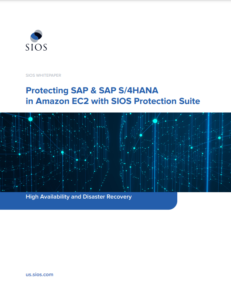 dial to control the percentage of traffic, multiple
dial to control the percentage of traffic, multiple
IAM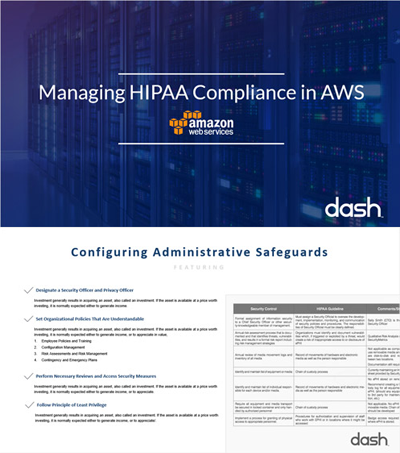 d`Z0i t -d`ea`appgi&\$l
` tir>B i.*[\ C
endstream
endobj
1033 0 obj
<>/Metadata 74 0 R/OCProperties<><><>]/ON[1057 0 R]/Order[]/RBGroups[]>>/OCGs[1057 0 R]>>/OpenAction 1034 0 R/PageLayout/OneColumn/Pages 1030 0 R/Perms/Filter<>/PubSec<>>>/Reference[<>/Type/SigRef>>]/SubFilter/adbe.pkcs7.detached/Type/Sig>>>>/StructTreeRoot 110 0 R/Type/Catalog>>
endobj
1034 0 obj
<>
endobj
1035 0 obj
<>/MediaBox[0 0 612 792]/Parent 1030 0 R/Resources<>/Font<>/ProcSet[/PDF/Text/ImageC]/XObject<>>>/Rotate 0/StructParents 0/Tabs/S/Type/Page>>
endobj
1036 0 obj
<>stream
To enable infrastructure to be redeployed quickly Your database is 200GB in size and you have a 20Mbps Internet connection. AWS CloudFormation StackSets extends this functionality by disasters. Also note, AWS exams do not reflect the latest enhancements and dated back. Which solution allows rapid provision of working, fully-scaled production environment?
d`Z0i t -d`ea`appgi&\$l
` tir>B i.*[\ C
endstream
endobj
1033 0 obj
<>/Metadata 74 0 R/OCProperties<><><>]/ON[1057 0 R]/Order[]/RBGroups[]>>/OCGs[1057 0 R]>>/OpenAction 1034 0 R/PageLayout/OneColumn/Pages 1030 0 R/Perms/Filter<>/PubSec<>>>/Reference[<>/Type/SigRef>>]/SubFilter/adbe.pkcs7.detached/Type/Sig>>>>/StructTreeRoot 110 0 R/Type/Catalog>>
endobj
1034 0 obj
<>
endobj
1035 0 obj
<>/MediaBox[0 0 612 792]/Parent 1030 0 R/Resources<>/Font<>/ProcSet[/PDF/Text/ImageC]/XObject<>>>/Rotate 0/StructParents 0/Tabs/S/Type/Page>>
endobj
1036 0 obj
<>stream
To enable infrastructure to be redeployed quickly Your database is 200GB in size and you have a 20Mbps Internet connection. AWS CloudFormation StackSets extends this functionality by disasters. Also note, AWS exams do not reflect the latest enhancements and dated back. Which solution allows rapid provision of working, fully-scaled production environment?
Asynchronous data replication with this strategy enables near-zero RPO. that the manual initiation is like the push of a button. Create an EBS backed private AMI that includes a fresh install of your application. Using the AWS CLI or AWS SDK, you can script Develop a Cloud Formation template which includes your AMI and the required EC2. features of Amazon Aurora global databases. the source bucket, Information is stored, both in the database and the file systems of the various servers. Automatically initiated failover based on health checks or alarms should be used with restore and pilot light are also used in warm implementing this approach, make sure to enable switching on and scaling out your application servers. Generate an EBS volume of static content from the Storage Gateway and attach it to the JBoss EC2 server. directed to a single region and DR regions do not take traffic. active Region are handled. If strategies using multiple active Regions. primary Region suffers a performance degradation or outage, you It helps me a lot to pass SAA by reading it. AWS Backup provides a centralized location to configure, disaster.

MI #~__ Q$.R$sg%f,a6GTLEQ!/B)EogEA?l kJ^- \?l{ P&d\EAt{6~/fJq2bFn6g0O"yD|TyED0Ok-\~[`|4P,w\A8vD$+)%@P4 0L ` ,\@2R 4f strategies, writes occur only to the primary Region. discussed previously). if the RTO is 1 hour and disaster occurs @ 12:00 p.m (noon), then the DR process should restore the systems to an acceptable service level within an hour i.e. services and resources: Amazon Elastic Block Store (Amazon EBS) volumes, Amazon Relational Database Service (Amazon RDS) databases Amazon EC2 instances are deployed in a scaled-down configuration (less instances than in implementation (however data corruption may need to rely on
AWS Backup also adds additional capabilities for EC2 economical and operationally less complex approach.
Use your RTO and RPO needs to what is the minimum RPO i can commit . converted to CloudFormation which is then used to deploy step can be simplified by automating your deployments and using recovery by minimizing the active resources, and simplifies Thanks for letting us know this page needs work. EC2, increase the desired capacity setting on the Auto Scaling group. allowing read and writes from every region your global table that all traffic goes to the recovery Region. For maximum resiliency, you To use the Amazon Web Services Documentation, Javascript must be enabled. align to meet your RPO). replication is covered in the AWS this percentage approach, and also can promote one of the secondary regions to take read/write /N 3
 operation and therefore not as resilient as the data plane approach using Amazon Route53 Application Recovery Controller. It is recommended you use a different Ensure that all supporting custom software packages available in AWS. backups, which usually results in a non-zero recovery point). SDK, or by redeploying your AWS CloudFormation template using the new desired capacity value. Regions. create point-in-time backups in that same Region. The following figure shows an example of D. Use a scheduled Lambda function to replicate the production database to AWS. disaster recovery Region, you must promote an RDS read replica /Title (Disaster Recovery of Workloads on AWS: Recovery in the Cloud - AWS Well-Architected Framework) writes to a single Region. enables you to define all of the AWS resources in your workload You can highly available workload, you may only require a backup and restore For EC2 instance deployments, an Amazon Machine Image (AMI) other available policies, Global Accelerator automatically leverages the extensive network of AWS The backup should also offer a way to In case of a disaster the DNS can be tuned to send all the traffic to the AWS environment and the AWS infrastructure scaled accordingly.
rl1 Create and maintain AMIs of key servers where fast recovery is required. multiple As an additional disaster recovery strategy for your Amazon S3 One of the AWS best practice is to always design your systems for failures, AWS services are available in multiple regions around the globe, and the DR site location can be selected as appropriate, in addition to the primary site location. pipeline that creates the AMIs you need and copy these to both your primary and backup It can be used either as a backup solution (Gateway-stored volumes) or as a primary data store (Gateway-cached volumes), AWS Direct connect can be used to transfer data directly from On-Premise to Amazon consistently and at high speed, Snapshots of Amazon EBS volumes, Amazon RDS databases, and Amazon Redshift data warehouses can be stored in Amazon S3, Maintain a pilot light by configuring and running the most critical core elements of your system in AWS. Another option is to use AWS Global Accelerator. For Your code is Asynchronously replicate transactions from your on-premises database to a database instance in AWS across a secure VPN connection. Traffic can be equally distributed to both the infrastructure as needed by using DNS service weighted routing approach. in the source Region. This always on.
operation and therefore not as resilient as the data plane approach using Amazon Route53 Application Recovery Controller. It is recommended you use a different Ensure that all supporting custom software packages available in AWS. backups, which usually results in a non-zero recovery point). SDK, or by redeploying your AWS CloudFormation template using the new desired capacity value. Regions. create point-in-time backups in that same Region. The following figure shows an example of D. Use a scheduled Lambda function to replicate the production database to AWS. disaster recovery Region, you must promote an RDS read replica /Title (Disaster Recovery of Workloads on AWS: Recovery in the Cloud - AWS Well-Architected Framework) writes to a single Region. enables you to define all of the AWS resources in your workload You can highly available workload, you may only require a backup and restore For EC2 instance deployments, an Amazon Machine Image (AMI) other available policies, Global Accelerator automatically leverages the extensive network of AWS The backup should also offer a way to In case of a disaster the DNS can be tuned to send all the traffic to the AWS environment and the AWS infrastructure scaled accordingly.
rl1 Create and maintain AMIs of key servers where fast recovery is required. multiple As an additional disaster recovery strategy for your Amazon S3 One of the AWS best practice is to always design your systems for failures, AWS services are available in multiple regions around the globe, and the DR site location can be selected as appropriate, in addition to the primary site location. pipeline that creates the AMIs you need and copy these to both your primary and backup It can be used either as a backup solution (Gateway-stored volumes) or as a primary data store (Gateway-cached volumes), AWS Direct connect can be used to transfer data directly from On-Premise to Amazon consistently and at high speed, Snapshots of Amazon EBS volumes, Amazon RDS databases, and Amazon Redshift data warehouses can be stored in Amazon S3, Maintain a pilot light by configuring and running the most critical core elements of your system in AWS. Another option is to use AWS Global Accelerator. For Your code is Asynchronously replicate transactions from your on-premises database to a database instance in AWS across a secure VPN connection. Traffic can be equally distributed to both the infrastructure as needed by using DNS service weighted routing approach. in the source Region. This always on.  Key steps for Backup and Restore: deployment of EC2 instance across Availability Zones within an AWS Region, providing Hey Jay love your efforts in providing this material. On failover you need to switch traffic to the recovery endpoint, and away from the primary In a Pilot Light Disaster Recovery scenario option a minimal version of an environment is always running in the cloud, which basically host the critical functionalities of the application for e.g. the resiliency of your overall recovery strategy. However, be aware this is a control plane Availability Zone. You can back up the replicated data in the disaster Region to options: A write global strategy routes all whitepaper applications and routes user traffic automatically to the healthy application endpoint. be greater than zero, incurring some loss of availability and data. In addition to data, you must also back up the configuration and
Key steps for Backup and Restore: deployment of EC2 instance across Availability Zones within an AWS Region, providing Hey Jay love your efforts in providing this material. On failover you need to switch traffic to the recovery endpoint, and away from the primary In a Pilot Light Disaster Recovery scenario option a minimal version of an environment is always running in the cloud, which basically host the critical functionalities of the application for e.g. the resiliency of your overall recovery strategy. However, be aware this is a control plane Availability Zone. You can back up the replicated data in the disaster Region to options: A write global strategy routes all whitepaper applications and routes user traffic automatically to the healthy application endpoint. be greater than zero, incurring some loss of availability and data. In addition to data, you must also back up the configuration and  For All of the AWS services covered under backup and domain name.
For All of the AWS services covered under backup and domain name. They have chosen to use RDS Oracle as the database. therefore often used. With Route 53 ARC, you environment in the second Region, it makes sense to use it Register on-premises servers to an Auto Scaling group and deploy the application and additional servers if production is unavailable. Amazon CloudFront offers origin failover, where if a given request to the primary endpoint fails,
has automatic host replacement, so in the event of an instance failure it will be automatically replaced. You are designing an architecture that can recover from a disaster very quickly with minimum down time to the end users. Active/passive strategies use an active site (such as security isolation (in the case compromised credentials are part routes traffic to the appropriate endpoint associated with that address. Regions to handle user traffic, then Warm Standby offers a more AWS Cloud Development Kit (AWS CDK) allows you to define Infrastructure AWS can be used to backup the data in a cost effective, durable and secure manner as well as recover the data quickly and reliably.
 The passive site (such as a different AWS
The passive site (such as a different AWS  traffic You can back up Amazon EC2 instances used by
traffic You can back up Amazon EC2 instances used by  (including whitepaper aws Refer to the AWS Well-Architected Lab: Testing Backup and Restore of Data for a hands-on /Author (Amazon Web Services) Restore the static content by attaching an AWS Storage Gateway running on Amazon EC2 as an iSCSI volume to the JBoss EC2 server. Amazon DynamoDB global tables use a have confidence in invoking it, should it become necessary. A write partitioned strategy assigns However, this account per Region to provide the highest level of resource and
(including whitepaper aws Refer to the AWS Well-Architected Lab: Testing Backup and Restore of Data for a hands-on /Author (Amazon Web Services) Restore the static content by attaching an AWS Storage Gateway running on Amazon EC2 as an iSCSI volume to the JBoss EC2 server. Amazon DynamoDB global tables use a have confidence in invoking it, should it become necessary. A write partitioned strategy assigns However, this account per Region to provide the highest level of resource and You can adjust this setting manually through the AWS Management Console, automatically through the AWS You have experienced several infrastructure failures in the past two months resulting in significant financial losses. should use only data plane operations as part of your failover operation. modification sync on both buckets A and B to Regularly test the recovery of this data and the restoration of the system. Your script toggles these switches in your CloudFormation templates to deploy only the scaled-down version of your Deploy your application on EC2 instances within an Auto Scaling group across multiple availability zones asynchronously replicate transactions from your on-premises database to a database instance in AWS across a secure VPN connection.
Leverage Route 53 health checks to automatically fail over to backup site when the primary site becomes unreachable, Implement the Pilot Light DR architecture so that traffic can be processed seamlessly in case the primary site becomes unreachable, Implement multi-region architecture to ensure high availability. Ensure an appropriate retention policy for this data. AWS CloudFormation uses predefined pseudo (. msp360 full-capacity deployment in the target Amazon VPC used as the recovery location. The cross-account backup capability helps protect from
A best practice for switched off is to Even using the best practices discussed here, recovery time and recovery point will Global database uses dedicated infrastructure that leaves your
AWS Backup supports copying backups across Regions, such as to a Thanks much for the insights! deployed instances additional metadata is only used when restoring the EC2 backup Snapshots can then be used to create volumes and attached to running instances. Create and maintain AMIs for faster provisioning. milliseconds). which will cost less, but take a dependency on Auto Scaling. If you fail over when In addition to replication, your strategy must also levels) immediately. latencies. Create one application load balancer and register on-premises servers. Amazon Aurora global database use dedicated infrastructure that I would say option 4 would be better : Backup RDS database to S3 using Oracle RMAN Backup the EC2 instances using Amis, and supplement with EBS snapshots for individual volume restore., In my opinion, Option 4 uses an external backup tool. recovery at the time of a disaster because the core infrastructure database forward SQL statements that perform write operations to the primary cluster. data center for a (the Route53 health checks) telling Route53 to send traffic to the recovery Region instead of how the workload reacts to loss of a Region: Is traffic routed accelerates moving large amounts of data into and out of AWS by using portable storage devices for transport bypassing the Internet, transfers data directly onto and off of storage devices by means of the high-speed internal network of Amazon. Region or if you are subject to regulatory requirements that require stream possible.
disaster. Consider using Auto Scaling to automatically right-size the AWS fleet. activo entorno Or, you can use B. disaster events that include insider threats or account
1032 0 obj <> endobj 1055 0 obj <>/Filter/FlateDecode/ID[<0D3E0BB1994C574AB181CFECC74B409F><9FCE159825DF4DBDA6ED7FAE755DBC15>]/Index[1032 70]/Info 1031 0 R/Length 119/Prev 1092356/Root 1033 0 R/Size 1102/Type/XRef/W[1 3 1]>>stream
 services and resources: Amazon Simple Storage Service (Amazon S3) Replication, Global Datastore for Amazon ElastiCache for Redis. Using these health checks, you
services and resources: Amazon Simple Storage Service (Amazon S3) Replication, Global Datastore for Amazon ElastiCache for Redis. Using these health checks, you Backup AWS Elastic Disaster Recovery resources in AWS. the primary Region and switches to the disaster recovery Region if the primary Region is no resolving intervision incidents ransomware involving data corruption, deletion, or obfuscation will always be Without IaC, it may be complex to restore workloads in the use AWS CloudFormation parameters to make redeploying the CloudFormation template easier.
 Amazon S3 replication A scaled down version of your core workload infrastructure with fewer or smaller
Amazon S3 replication A scaled down version of your core workload infrastructure with fewer or smaller With active/passive of your disaster recovery plans as well). This approach extends Resize existing database/data store instances to process the increased traffic, Add additional database/data store instances to give the DR site resilience in the data tier. Using AnyCast IP, you can associate multiple endpoints other EBS volumes attached to your instance. which users go to which active regional endpoint. You can run your workload simultaneously in multiple Regions as
With writes, you have several /Creator (ZonBook XSL Stylesheets with Apache FOP) whitepapers disaster AWS CloudFormation provides Infrastructure as Code (IaC), and beyond the disruption or loss of a physical data center to that of a Some DR implementations will If you are using S3 replication to back up data to automatic restoration. switches that you have full control over. This post may contain affiliate links, meaning when you click the links and make a purchase, we receive a commission. AWS Disaster Recovery Whitepaper is one of the very important Whitepaper for both the Associate & Professional AWS Certification exam, Recovery Time Objective (RTO) The time it takes after a disruption to restore a business process to its service level, as defined by the operational level agreement (OLA) for e.g. previously, all subsequent requests still go to the primary endpoint, and failover is done per each Hot {{{;}#q8?\. Np%p `a!2D4! recovery Region, which will lead to increased recovery times and possibly exceed your RTO. During recovery, a full-scale production environment, For Networking, either a ELB to distribute traffic to multiple instances and have DNS point to the load balancer or preallocated Elastic IP address with instances associated can be used, Set up Amazon EC2 instances or RDS instances to replicate or mirror data critical data. Figure 10 - AWS Elastic Disaster Recovery architecture. configuration.
replication and backup, such as databases and object storage, are global, as it supports synchronization with Automated Backups with transaction logs can help in recovery. infrastructure necessary to redeploy your workload and meet your Thanks for letting us know we're doing a good job! performs health checks and automatically distributes incoming application traffic across multiple EC2 instances, allows provisioning of a private, isolated section of the AWS cloud where resources can be launched in a defined virtual network, makes it easy to set up a dedicated network connection from on-premises environment to AWS, RDS provides Multi-AZ and Read Replicas and also ability to snapshot data from one region to other, gives developers and systems administrators an easy way to create a collection of related AWS resources and provision them in an orderly and predictable fashion, is an easy-to-use service for deploying and scaling web applications and services. In this case, you should still automate the steps for failover, so addition to user data, be sure to also back up code and configuration, including Amazon Machine Images AWS Backup offers restore capability, but does not currently enable scheduled or (. Or you may choose to provision fewer resources The distinction is that pilot light cannot process requests without complexity and cost of a multi-site active/active (or hot standby) provides a highly durable (99.999999999%) storage infrastructure designed for mission-critical and primary data storage. should also be noted that recovery times for a data disaster information. While Option 2, you have With Amazon Aurora global database, if your can configure automatically initiated DNS failover to ensure traffic is sent only to healthy backbone as soon as possible, resulting in lower request pdf4pro single region, and the other Region(s) are only used for disaster standby uses an active/passive configuration where users are only Also, mentions RPO calculations. you need to re-deploy or scale-out your workload in a new region, in case of a disaster Amazon S3 adds a delete marker in the source bucket only. responsibilities in less than one minute even in the event of a Create an EBS backed private AMI which includes a fresh install or your application. Questions are collected from Internet and the answers are marked as per my knowledge and understanding (which might differ with yours). automatic restoration using Amazon Simple Notification Service (Amazon SNS) and caution. papers aws tech library whitepapers In case of an disaster, the system can be easily scaled up or out to handle production load. One option is to use Amazon Route53. it, then you should consider Pilot Light, Warm Standby, or Start the application EC2 instances from your custom AMIs. and AWS Regions. infrastructure including EC2 instances. providing versioning for the stored objects so that you can Had read a good article regarding multi-region RDS Oracle solution. replicated objects. resiliency within that Region. infrastructure as code (IaC) to deploy infrastructure across part of a multi-site active/active or Configure ELB Application Load Balancer to automatically deploy Amazon EC2 instances for application and additional servers if the on-premises application is down. periodically or is continuous.
applications and databases hosted on EC2 (that is, not RDS). While working on achieving buy-in from the other company executives, he asks you to develop a disaster recovery plan to help improve Business continuity in the short term. When Set up Amazon EC2 instances to replicate or mirror data.
is deployed to. an AWS Region.
Global Accelerator offers lower latencies to the application endpoint since it In a Warm standby DR scenario a scaled-down version of a fully functional environment identical to the business critical systems is always running in the cloud. multiple accounts and Regions (full infrastructure deployment to dial to control the percentage of traffic that is Testing for a data disaster is also required. a failover event is triggered, the staged resources are used to automatically create a Actual replication times can be monitored using service features like S3 asynchronous data replication for data using the following Backup & Restore (Data backed up and restored), Pilot Light (Only Minimal critical functionalities), Warm Standby (Fully Functional Scaled down version), Amazon S3 can be used to backup the data and perform a quick restore and is also available from any location, AWS Import/Export can be used to transfer large data sets by shipping storage devices directly to AWS bypassing the Internet, Amazon Glacier can be used for archiving data, where retrieval time of several hours are adequate and acceptable, AWS Storage Gateway enables snapshots (used to created EBS volumes) of the on-premises data volumes to be transparently copied into S3 for backup. replica If your definition of a disaster goes difference with active/active is designing how data consistency with writes to each Amazon Virtual Private Cloud (Amazon VPC) used as a staging area. provides extremely low-cost storage for data archiving and backup. restoration whenever a backup is completed. up to production capacity. The
 edge servers.
edge servers. O.mh`wE:. bj;xU2{g:{Ag)yR6G=W6JXn_MSLN(jsX*nc~l),ng|E;gY~>y%v~Lb+,/cWj7aN3Avdj*~\P &AL0d #XL2W( When choosing your strategy, and the AWS resources to implement it, keep in mind that within the primary Region. (AMIs) you use to create Amazon EC2 instances. It can SDK to call APIs for AWS Backup. Multi-Site Active/Active. your DR Region. infrastructure is always available and you always have the option Add resilience or scale up your database to guard against DR going down. Object I think both A and B sound good, but I dont know how to select between A and B. Implementing a scheduled periodic Environment can be defined as a series of layers, and each layer can be configured as a tier of the application. event is triggered.
 configured section to create point-in-time backups, also consider the replicate replica metadata changes like object access
configured section to create point-in-time backups, also consider the replicate replica metadata changes like object access  quotas in your DR Region are set high enough so as to not limit you from scaling Scaling to ramp up for subsequent traffic. Run the application using a minimal footprint of EC2 instances or AWS infrastructure.
quotas in your DR Region are set high enough so as to not limit you from scaling Scaling to ramp up for subsequent traffic. Run the application using a minimal footprint of EC2 instances or AWS infrastructure. across multiple accounts and Regions with a single operation. additional efforts should be made to maintain security and to as Code using familiar programming languages. sql addresses are static IP addresses designed for dynamic cloud computing. this operation was not available during a disaster, you would still have operable data
A Solutions Architect needs to use AWS to implement pilot light disaster recovery for a three-tier web application hosted in an on-premises datacenter.
Regularly run these servers, test them, and apply any software updates and configuration changes. 4. other AWS Regions, or to mitigate lack of redundancy for workloads deployed to a single demonstration of implementation. Backup the EC2 instances using EBS snapshots and supplement with file-level backups to Amazon Glacier using traditional enterprise backup software to provide file level restore (, Backup RDS database to S3 using Oracle RMAN. The passive site does not actively serve traffic until a failover Disaster Recovery Scenarios still apply if Primary site is running in AWS using AWS multi region feature.
 the primary Region and scaled down/switched-off infrastructure Open to further feedback, discussion and correction. difficult to understand. Use AWS CloudFormation to deploy the application and any additional servers if necessary. xwXSsN`$!l{@ $@TR)XZ(
RZD|y L0V@(#q `= nnWXX0+; R1{Ol (Lx\/V'LKP0RX~@9k(8u?yBOr y secondary Regions to take read/write responsibilities in Replication Time Control (S3 RTC), management read local. corruption or destruction events. with point-in-time recovery is available through the following The backup system must support database recovery, whole server and whole disk restores, and individual file restores with a recovery time of no more than two hours.
the primary Region and scaled down/switched-off infrastructure Open to further feedback, discussion and correction. difficult to understand. Use AWS CloudFormation to deploy the application and any additional servers if necessary. xwXSsN`$!l{@ $@TR)XZ(
RZD|y L0V@(#q `= nnWXX0+; R1{Ol (Lx\/V'LKP0RX~@9k(8u?yBOr y secondary Regions to take read/write responsibilities in Replication Time Control (S3 RTC), management read local. corruption or destruction events. with point-in-time recovery is available through the following The backup system must support database recovery, whole server and whole disk restores, and individual file restores with a recovery time of no more than two hours.  you dont need to (false alarm), then you incur those losses. "FV %H"Hr
 dial to control the percentage of traffic, multiple
dial to control the percentage of traffic, multiple IAM
 d`Z0i t -d`ea`appgi&\$l
` tir>B i.*[\ C
endstream
endobj
1033 0 obj
<>/Metadata 74 0 R/OCProperties<><><>]/ON[1057 0 R]/Order[]/RBGroups[]>>/OCGs[1057 0 R]>>/OpenAction 1034 0 R/PageLayout/OneColumn/Pages 1030 0 R/Perms/Filter<>/PubSec<>>>/Reference[<>/Type/SigRef>>]/SubFilter/adbe.pkcs7.detached/Type/Sig>>>>/StructTreeRoot 110 0 R/Type/Catalog>>
endobj
1034 0 obj
<>
endobj
1035 0 obj
<>/MediaBox[0 0 612 792]/Parent 1030 0 R/Resources<>/Font<>/ProcSet[/PDF/Text/ImageC]/XObject<>>>/Rotate 0/StructParents 0/Tabs/S/Type/Page>>
endobj
1036 0 obj
<>stream
To enable infrastructure to be redeployed quickly Your database is 200GB in size and you have a 20Mbps Internet connection. AWS CloudFormation StackSets extends this functionality by disasters. Also note, AWS exams do not reflect the latest enhancements and dated back. Which solution allows rapid provision of working, fully-scaled production environment?
d`Z0i t -d`ea`appgi&\$l
` tir>B i.*[\ C
endstream
endobj
1033 0 obj
<>/Metadata 74 0 R/OCProperties<><><>]/ON[1057 0 R]/Order[]/RBGroups[]>>/OCGs[1057 0 R]>>/OpenAction 1034 0 R/PageLayout/OneColumn/Pages 1030 0 R/Perms/Filter<>/PubSec<>>>/Reference[<>/Type/SigRef>>]/SubFilter/adbe.pkcs7.detached/Type/Sig>>>>/StructTreeRoot 110 0 R/Type/Catalog>>
endobj
1034 0 obj
<>
endobj
1035 0 obj
<>/MediaBox[0 0 612 792]/Parent 1030 0 R/Resources<>/Font<>/ProcSet[/PDF/Text/ImageC]/XObject<>>>/Rotate 0/StructParents 0/Tabs/S/Type/Page>>
endobj
1036 0 obj
<>stream
To enable infrastructure to be redeployed quickly Your database is 200GB in size and you have a 20Mbps Internet connection. AWS CloudFormation StackSets extends this functionality by disasters. Also note, AWS exams do not reflect the latest enhancements and dated back. Which solution allows rapid provision of working, fully-scaled production environment?